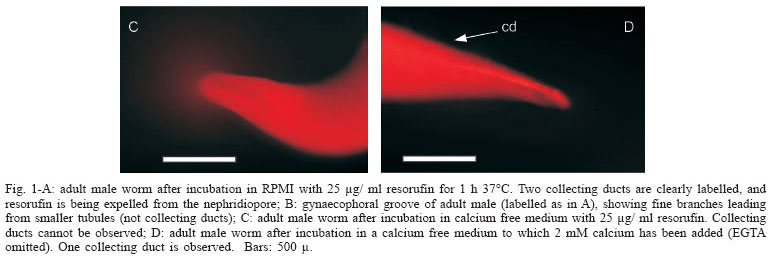We have been able to label the excretory system of cercariae and all forms of schistosomula, immature and adult worms with the highly fluorescent dye resorufin. We have shown that the accumulation of the resorufin into the excretory tubules and collecting ducts of the male adult worm depends on the presence of extracellular calcium and phosphate ions. In the adult male worms, praziquantel (PZQ) prevents this accumulation in RPMI medium and disperses resorufin from tubules which have been prelabelled. Female worms and all other developmental stages are much less affected either by the presence of calcium and phosphate ions, or the disruption caused by PZQ. The male can inhibit the excretory system in paired female. Fluorescent PZQ localises in the posterior gut (intestine) region of the male adult worm, but not in the excretory system, except for the anionic carboxy fluorescein derivative of PZQ, which may be excreted by this route. All stages of the parasite can recover from damage by PZQ treatment in vitro. The excretory system is highly sensitive to damage to the surface membrane and may be involved in vesicle movement and damage repair processes. In vivo the adult parasite does not recover from PZQ treatment, but what is inhibiting recovery is unknown, but likely to be related to immune effector molecules.
Schistosoma mansoni; praziquantel; excretory system; resorufin; P-glycoproteins; mode of action




